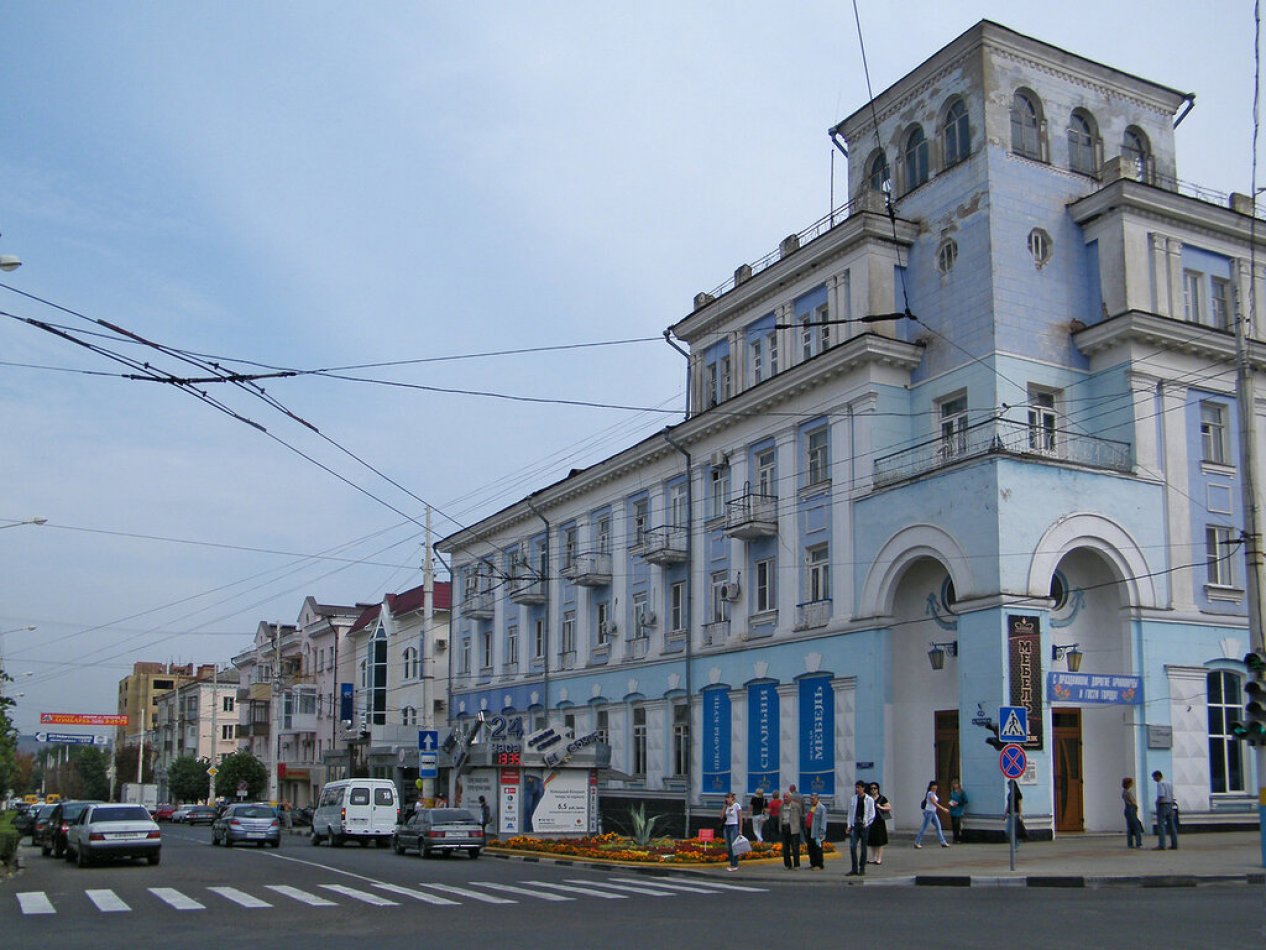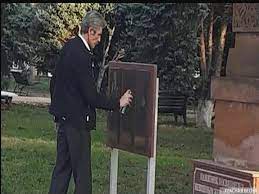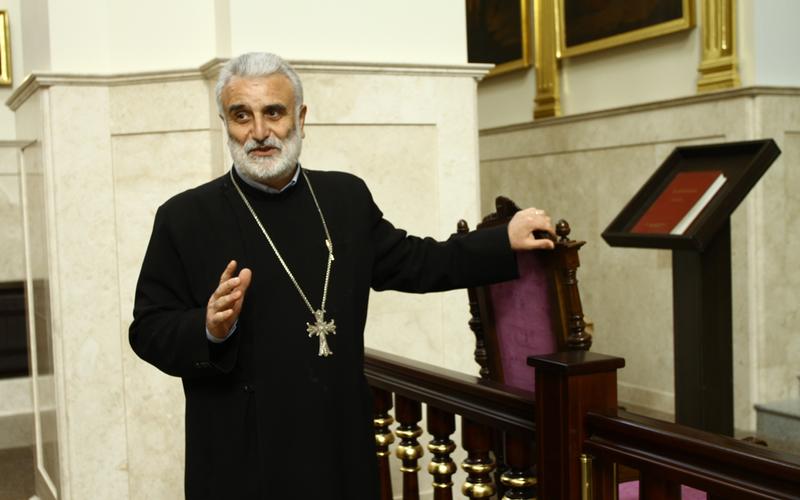
Memorial plaques in honor of the USSR Marshals Ivan Baghramyan, Hamazasp Babajanyan, as well as Andranik Ozanyan and Garegin Nzhdeh, installed on the territory of the Armenian temple, have been dismantled in Armavir city, Krasnodar Krai of Russia, Vice-President of the Union of Armenians of Russia Herman Ananyants said earlier.

He noted that it was stated that this was done in order to legalize the installation of these plaques. He added that the registration process is underway. “It may be possible to get busts installed. That is, either the plaques will be legalized, or the busts will be installed,” Ananyants noted.
The memorial plaque to Garegin Nzhdeh was demolished back in December 2019 after MP of the Armavir City Duma (Russian Federation, Krasnodar Krai) Mikhail Vinogradov painted it black.

Earlier, local residents asked to remove the monument to the “hero of Armenia” who fought on the side of the Nazis and was convicted in the USSR. Vinogradov noted that the local branch of the Union of Armenians was supposed to dismantle the plaque within two weeks, but didn’t do it. The head of the State Duma Committee on CIS Affairs Leonid Kalashnikov supported the municipal deputy and said that ‘a memorial plaque in honor of Garegin Nzhdeh is like a red rag. I won’t calm down until it is removed.’
The Armenian side claimed that the plaque was temporarily dismantled and it “should be reinstalled after restoration.” Archpriest of the temple Makar Terteryan said that all the memorial plaques that are on the territory of the church, and there are several of them for Ivan Baghramyan, Hamazasp Babajanyan and Andranik Ozanyan, will be opened after the memorial plaque for Nzhdeh is restored and returned to its place.

Two years have passed, but the Nzhdeh plaque has not been restored. Moreover, all other plaques have disappeared. Why? The case is that the Armenian diaspora violated municipal legislation. A letter sent to Archpriest Terteryan of November 8, 2019, on behalf of the deputy head of the municipality of Armavir city, Frolov, in particular, reads that in accordance with the Procedure for the establishment of memorial plaques, busts, memorial signs, other memorial structures in order to perpetuate the memory of persons with outstanding achievements to the municipality of Armavir city and (or) special merits, as well as historical events in the municipality of Armavir city, the installation of any memorial plaque on the territory of the city should be carried out only after an appropriate decision is made by the Armavir City Duma. “Memorial plaques installed in violation of the established procedure are subject to dismantling. The Armavir City Duma did not make a decision on the installation of a memorial plaque to Ter-Harutyunyan (Nzhdeh) on the territory of the municipality of Armavir city,” Frolov said in his letter.

All memorial plaques and monuments in Armavir are installed in the specified order and also concern ethnic communities. For example, last autumn, the Armavir City Duma considered an appeal for the installation of a memorial plaque dedicated to the memory of the residents of the Pervomaisky, Zuevo, Krasin farms - rear front workers during the Great Patriotic War. A positive decision was made in this regard.
Another example - the Duma considered the petition of the council of the Armavir city public organization of the Adyghe culture ‘ADYGE KHASE’ and gave permission to perpetuate the memory of Liev Adelgeriy Amerbievich.
When installing memorial plaques in the city, the Armenian diaspora also had to apply for a permit. The Armenian side claims that the territory of the church is not a municipal property, but the private property of the local religious organization “Verapohum Surb Astvatsatsin Church of Ancient Eastern Orthodoxy in Armavir of the Armenian Apostolic Church.” According to federal law, religious organizations have the right to dispose of their property, including objects and monuments of cultural and historical heritage.
However, Russian lawyers don’t have an unequivocal opinion about the right to erect monuments on private territory. According to the law, each type of land use has its own procedure, conditions and types of exploitation. If the administration has doubts that the land is being used by the owner or tenant for its intended purpose, the administration really has the right to demand an inspection. It is the legal message that is important here. If this is something that a person has installed for his or her personal needs, like decorating his or her own plot, no one can tell him or her that this is prohibited. This in no way violates any norms and rules in this situation. However, if the person positions it precisely as a monument, as a memorial, it will be viewed in a completely different context.
The Nzhdeh memorial, which was the first to be dismantled, has not yet been restored. The Russian media noted that the initiators of the installation of this plaque challenged all the declarations of the authorities about the need to combat the glorification of Nazism.

Meanwhile, the Armenian side expects to receive permission to install the busts. It is doubtful with regard to two of the four persons immortalized on the territory of the church.
So, the archives store enough evidence of Nzhdeh’s cooperation with the Third Reich, for which he was sentenced to 25 years in prison. “...During the Second World War, I established contact with the German intelligence agencies in order to conduct subversive work against parts of the Soviet army. I was engaged in the recruitment and training of people to carry out the tasks of the German intelligence and counterintelligence agencies, was a member of the “Armenian National Council” (in fact - a committee), created in Berlin in 1942, i.e. in the crimes provided for by Articles 58-4, 58-11 and 58-6, part 1 of the Criminal Code of the RSFSR.”
Dashnak Andranik Oznanyan was one of the organizers of the massacres of civilians in Turkey and Azerbaijan in 1918-1919, which is also confirmed by numerous archival documents. According to the Transcaucasian Regional Committee of the Russian Communist Party (Bolsheviks) (No. 6-7, June-July 1919, Tiflis), in the village of Yaychi (Nakhchivan) alone, 2,500 people were killed by a gang, their corpses were thrown into Araz river.
All of the above-mentioned facts raise doubts that the memorial plaques of Nzhdeh and Andranik on the territory of the Armenian church in Armavir will be restored in their former place, and that their busts will appear. Earlier, the Armenian side also claimed that the Nzhdeh memorial plaque was temporarily dismantled in order to “remove the traces of vandalism.”
However, this didn’t happen.




















